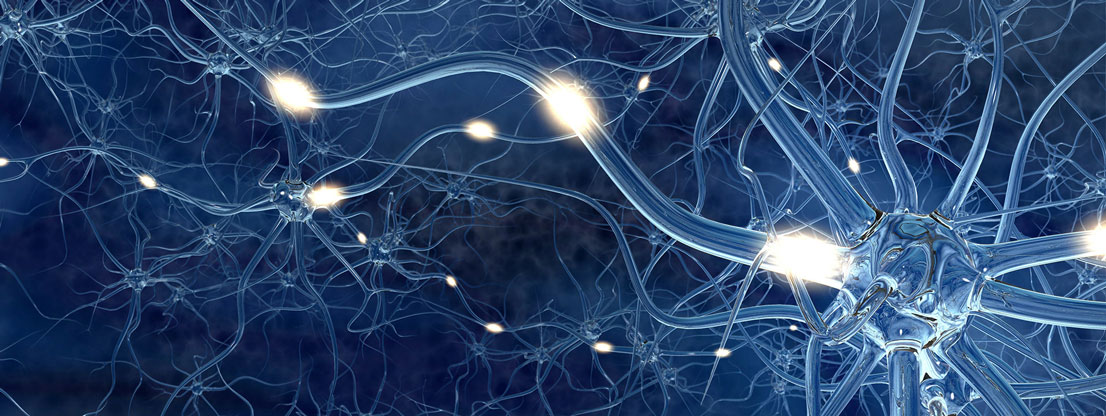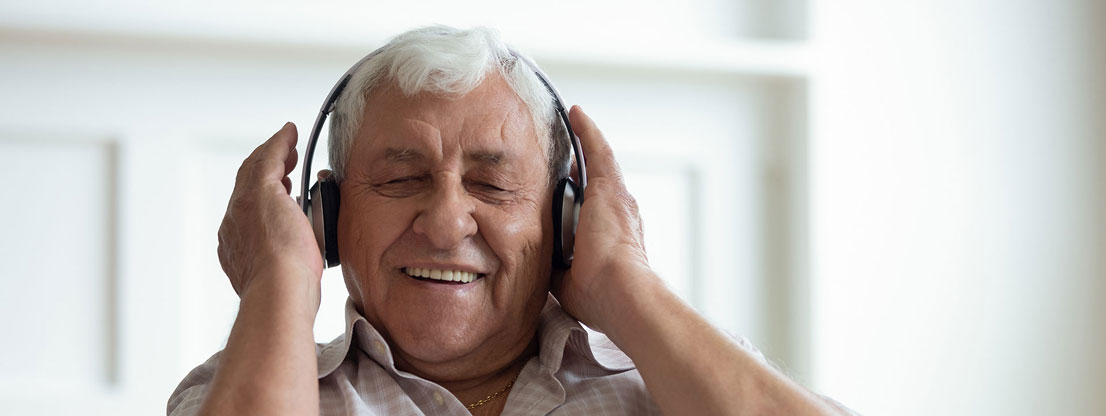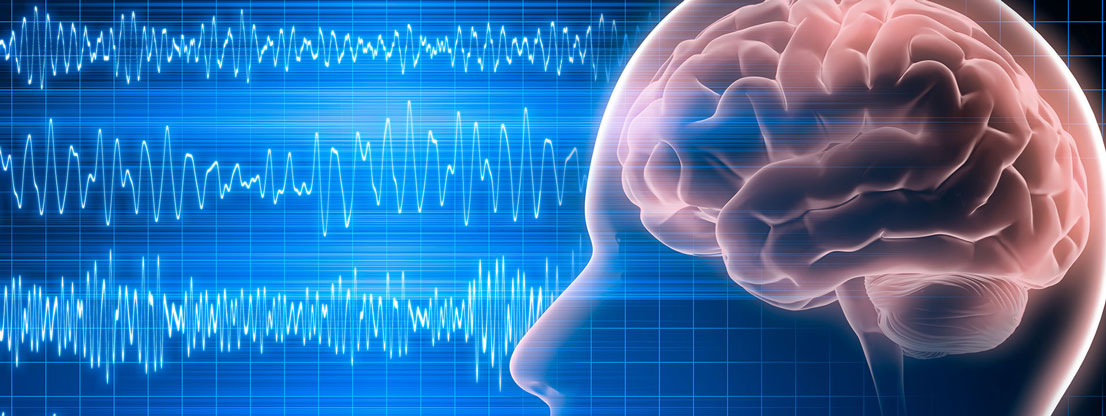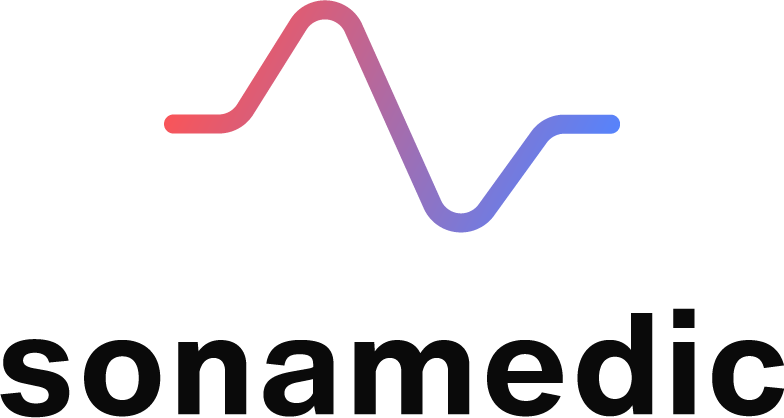Support concentration, memory and creativity with binaural beats
Binaural beats are a very gentle method to achieve positive effects in different areas and situations of your life. Different frequencies of binaural beats can have a variety of effects, including an increase in your mental capacity. They improve your concentration, support your memory and make you more creative. Binaural beats work through brain wave synchronisation, which means that brain waves, each of which occurs in different moods, orientate themselves to the frequencies they are tuned into. In this way mental states can be stimulated or consolidated. Binaural beats often have very different effects from person to person. It is best if you try out for yourself which frequencies work well for you.
In order to give you a better overview, we would like to introduce you to several studies in the following sections that deal with the influence of binaural beats on mental performance enhancement. If you only want to get a rough overview of the individual results, you will find a short summary at the beginning of each study. However, you can also read more about the research here.
Binaural beats can be roughly divided into the following frequency ranges. However, the exact delimitation of the individual ranges sometimes differs for different sources:
Delta frequency range: 0.1 to 4 Hertz
Theta frequency range: 4 to 8 Hertz
Alpha frequency range: 8 to 13 Hertz
Beta frequency range: 13 to 30 Hertz
Gamma frequency range: over 30 Hertz

Scientific study 1: An Empirical Investigation into the Effect of Beta Frequency Binaural-beat Audio Signals on Four Measures of Human Memory (1994)
Summary
For this 1994 study, 50 students underwent a total of four tests. All these tests examined aspects of the participants’ memory performance. The subjects were randomly divided into two groups. One group only listened to music, the other group also had binaural beats embedded in the music. In three of the four tests used, the people in the group with binaural beats showed a statistically significant improvement in memory performance compared to the people in the control group who only listened to music. The author of the study concludes that binaural beats have a beneficial effect on memory performance.
Structure and procedure of the study
Of the 50 subjects, 27 were randomly assigned to the experimental group and 23 to the control group. The subjects listened to 15-minute audio recordings each. Only in the experimental group were beta binaural beats integrated into the music. After 15 minutes, the subjects were asked to complete the memory tests. The music continued while the participants solved the tasks.
For the purpose of the study, the author defined memory performance as the ability to independently reproduce the information given in the four tests. The subjects had to pass the following four modules:
1 Test: Free reproduction of a word list – This test requires the participant to reproduce freely from memory the content of a previously shown word list. The test subjects were then requested to give 25 correct answers.
2 Test: Reproducing German vocabulary – Same structure as in the first test. However, the test subjects had to reproduce German vocabulary, which is a more complex memory task.
3 & 4. digit span test – and digit span symbol test using the changer Adult Intelligence Scale Test (WAIS-R) method. The Digit-Span Test determines how many elements can be compared or logically related to each other simultaneously.
Tests 3 and 4 were conducted to check the observations of teachers who had used binaural beats in their classes and observed an increase in grades and attention and a decrease in hyperactivity in their students.
Result and conclusion
Test 1: Of 25 possible correct answers, the participants in the control group gave an average of 14 correct answers, those in the experimental group an average of 15.9 – the result is statistically significant. (P > 0,5)
Test 2: Out of 25 possible answers, the participants in the control group answered correctly on average 12.61, the test persons in the experimental group gave correct answers on average 15.04. This result is not statistically significant. (P < 0,5)
Test 3: In the digit symbol test, the control group achieved a score of 9.46, the experimental group 11.44 points. The result is statistically significant. (p > 0,5)
Test 4: In the digit symbol subtest, the control group achieved a score of 7.69, the experimental group a score of 9.85. The result is statistically significant. (p > 0,5)
Three of the four memory tests show a statistically significant improvement by using binaural beats in the beta range. According to the author of the study, Richard Cauley Kennerly, it can be concluded that beta frequency binaural beats are an effective method of increasing a person’s ability to reproduce seen content, increasing receptivity and improving the performance of motor tasks.
The research confirms the observations of teachers who noticed improved grades and fewer behavioural problems in their students after using binaural beats. The study shows that binaural beats are a way to gently improve mental performance.

Study 2: The Effect of Binaural Beats on Visuospatial Working Memory and Cortical Connectivity (2016)
Summary
This study investigates the effect of four different acoustic stimulations on working memory, the mental system that deals with short-term memory and the organisation of targeted behaviour. Working memory enables us to temporarily store information and simultaneously analyse it. In addition, the connectivity of different brain regions was determined. The subjects were to undergo a visual memory test and were exposed to different stimuli. The evaluation of the results shows that the test persons solved memory tasks much more accurately with binaural beats in the 15 Hz range. In addition, brain waves could be measured with such a stimulus, indicating an increased information flow between individual brain regions.
Structure and procedure of the study
In this study 28 healthy patients listened to 6 different audio recordings while undergoing a visual memory test. The 6 test sounds changed every 5 minutes. In total, the test lasted 30 minutes.
No sound,
Pure tone (R: 240 Hz, L: 240 Hz) [1
Classical music
5 Hz Binaural beat (R: 240 Hz, L: 245 Hz)
10 Hz Binaural beat (R: 240 Hz, L: 250 Hz)
15 Hz Binaural beat (R: 240 Hz and L: 255 Hz)
R and L stand for the right and left ear respectively.
The different tones with binaural beats were created with the software Matlab. The memory test, which the test persons underwent, was a visual-spatial matching-to-sample task. The test subjects were presented with a visual stimulus that they had to remember. They are then asked to find out from a series of new stimuli the one that matches the old one. In this experiment, the test persons searched for matching images. The brain waves were then measured using an electroencephalogram (EEG). The order of the sounds that were played was varied from subject to subject to minimise unwanted side effects caused by a certain fixed order.
Result and conclusion
The subjects’ performance during the task was significantly better in the period when they were stimulated with a 15 Hz beta frequency than in all other conditions. It was the only audio stimulation that produced a three percent increase in performance over the entire five-minute period. During all other stimulations, the patients’ abilities were negatively affected by between one and three percentage points. These acoustic stimulations therefore had a rather distracting effect on the precision of the test subjects. However, the reaction time of the study participants could not be improved by the binaural beats either.
Listening to the 15 Hz beta frequency had a significantly positive effect on the subjects in the matching-to-sample test over the entire time. This is consistent with previous observations that associate beta binaural beats with increased memory and concentration.

Study 3:THE EFFECT OF BINAURAL BEATsS ON WORKING MEMORY CAPACITY (2015)
Summary
In this study, the increase in performance of binaural beats in the alpha range between 7.5 and 12.5 Hz on working memory (WMC) was investigated. The 50 subjects listened to either pure ocean sounds or ocean noise with integrated binaural beats. The OSPAN method was used to study working memory performance under normal conditions and after each stimulation. The scientists were able to demonstrate an increase in performance in the group stimulated by binaural beats.
Structure and procedure of the study
A total of 50 test persons took part in the study. The participants were randomly divided into experimental group (sea noise & binaural beats in the alpha range) and control group (sea noise only). 10 subjects were screened in advance because they had not met the necessary requirements in a preliminary examination. The 40 remaining participants completed an Automated Operation Span Task (OSPAN), a task that tests the capacity of working memory. The respondent has to memorise a series of 3 – 7 randomly appearing letters and is then presented with a simple mathematical equation. He must assess whether this equation is correct. Then a letter appears again for 800 ms. This process is repeated three to seven times. Finally, the test person is presented with a series of letters and must decide which of these letters have already been shown to him during the experiment. The test persons were simultaneously exposed to two tones of the frequencies 230 Hz and 220.45 Hz. This produced a binaural beat of the alpha frequency of 9.55 Hz. The sounds with sea noise or with sea noise and integrated binaural beats each lasted 12 minutes. The subjects of the experimental group were not aware of the existence of the binaural beats even after hearing them.
The test persons first passed the AOSPAN test without any noise. They then listened to one of the two recordings for 12 minutes and then took the test a second time.
Result and conclusion
In contrast to the control group, the subjects in the experimental group showed a significantly positive effect when they completed the AOSPAN test. The scientists speak of a medium effect. The study thus shows that binaural beats in the alpha range had a temporally positive effect on working memory capacity.

Study 4: More attentional focusing through binaural beats: evidence from the global-local task (2015)
Summary
The study was designed to investigate whether high frequency binaural beats have an effect on the efficiency of attention focusing. To do this, participants in the experimental group listened to binaural beats in the gamma range (40 Hz), which are thought to have a positive effect on attention distribution. The participants in the study listened to either three minutes of binaural beats or a simple tone of 340 Hz before completing a global local task. The study examines in which sequence and how quickly test persons recognise superior and inferior structures of a figure. The result of this study showed that binaural beats had no influence on the ability of the test persons to fade out irrelevant information. In contrast, a lower global precidence effect was found in the group with the binaural beats compared to the group with the control tone. It can therefore be assumed that high frequency binaural beats improve visual attention focus.
Structure and procedure of the study
A total of 36 students took part in the study as test persons. At random, 18 patients listened to recordings with binaural beats and 18 patients listened to control recordings with the 340 Hz tone. In the global-local-task the test persons were presented hierarchically ordered geometric figures on a screen. Small figures compose larger figures. The subjects were asked to pay attention either to the large, composite figure or to the small geometric figures that make up the large figure. Before the global-local-task the test persons were stimulated for three minutes by the corresponding sound recording. This stimulation was also maintained during the global-local-task. The subjects also assessed their own mood before and after the experiment.
Result and conclusion
The size of the global precidence effect was significantly smaller in the group with binaural beats (36 ms) in the gamma range than in the comparison group (57 ms). However, it could not be observed that binaural beats led to the participants being better able to hide irrelevant information.
The researchers conclude that binaural beats can stimulate mental activity. However, more research is needed to find out how these effects work over longer periods of time.

Study 5: The impact of binaural beats on creativity (2013)
Summary
Human creativity depends on a number of mental processes, some of which are influenced by the messenger substance dopamine. The messenger substance dopamine has a significant influence on our sense of happiness. In this study, the researchers tried to determine the influence of binaural beats on the creativity of the test persons, or more specifically on divergent and convergent thinking. In convergent thinking, we deal with a topic openly, experimentally and unsystematically, whereas thinking could be described more as ordinary, linear-rational thinking. They also linked their observations to the amount of dopamine in the striatum, a part of the cerebrum. The subjects were stimulated by binaural beats in the alpha and gamma range. They each took a test to measure convergent and divergent thinking, which are two important functions of creativity. In addition, the study participants completed a questionnaire on their current emotional state (PANAS-S). The dopamine level in the striatum was estimated by the blink rate. The results show that binaural beats can influence divergent but not convergent thinking, regardless of their frequency. Individuals with a low blink rate benefited most from binaural beats in the alpha range, while individuals with a high blink rate showed no effect in either range.
Structure and procedure of the study
Many different processes are involved in our creativity. Two very important processes are divergent and convergent thinking. Some authors also suspect a close connection between creativity and the messenger substance dopamine. The participants came on three dates. One time they heard binaural beats in the alpha range (10 Hz), another in the gamma range (40 Hz) and another time a constant tone of 340 Hz. At the beginning of each session, the patients’ blink rate was measured for 5 minutes.
Divergent thinking was measured using an Alternate Use Task (AUT). This task measures originality, fluency, flexibility and elaboration of the subjects in coping with a requirement. In each session, subjects were given two tasks, each of which took 10 minutes to complete.
To capture convergent thinking, the subjects were presented with three words that were not closely related. The participants were then asked to find a word that is related to all three given words. In each session the participants were confronted with 10 such word pairs. The probands were also asked to assess their own mood.
Result and conclusion
In the study, no influence of binaural beats on convergent thinking was found, whereas divergent thinking was systematically influenced. The researchers included the dopamine level in their analysis. The results show that binaural beats in the alpha and gamma range have positive effects in people with a low blink rate and the corresponding dopamine level. People with high blink rates did not benefit from the stimulation. The assumption that the changes in creativity are also associated with changes in mood could not be confirmed in this study.
The results also show no difference between the effects of binaural beats in the alpha and gamma range, both having the same effect on divergent thinking. The results show that the effect of binaural beats also depends on the individual characteristics of each person. If the right conditions are in place, binaural beats can promote creativity.

Study 6: Eliminating the attentional blink through binaural beats: a case for tailored cognitive enhancement (2015)
Summary
The study examined the effect of binaural beats on attention control in an attentional blink (AB) test. In this test, stimuli are presented to the subject in rapid succession. Depending on the speed of the sequence of stimuli, the subject can identify the first stimulus well, but can identify the second one less or hardly at all. One of the explanations for this phenomenon attributes the attentional blink to a limited capacity of the working memory. The researchers studied the effect of high-frequency binaural beats on the attentional blink effect, taking into account the individual differences between the subjects. They found that binaural beats switched off attentional blinking, but only in subjects with a low spontaneous blinking rate, which was due to low levels of dopamine in the striatum, a part of the cerebrum.
Structure and procedure of the study
Individual differences between individuals play an important role in the effect of techniques designed to enhance mental performance. Previous research shows that individuals with low dopamine levels have a greater effect from attention-enhancing techniques, while individuals with medium or high dopamine levels have no effect. 24 students (22 women and 2 men between the ages of 17 and 25) took part in the study. Because mood correlates with dopamine levels, the researchers also studied the mood of the subjects using a 9×9 arousel/pleasure affect grid. The participants took part in three sessions in which they listened once to binaural beats in the alpha range (10 Hz), in the gamma range (40 Hz) or a constant tone of 340 Hz as a control situation. The binaural beats were also offset by a carrier tone of 340 Hz. The participants listened to the three recordings three minutes before and during the attetional blinking test. The blink rate (EBR) was measured at the beginning of each session for five minutes before the presentation of the binaural beats. An analysis of the variance of the blink rate (EBR) found no differences between sessions.
Result and conclusion
The scientists found a significant effect p>0.58 in the low blink rate group where attentional blinking was almost switched off. No such effect was found in people with a high blinking rate. This shows that binaural beats can have a positive effect in people who meet the appropriate conditions.
Since attentional blinking is a very stable effect, scientists find it remarkable that it can be almost completely eliminated by binaural beats. The researchers also find it notable that this is predicted by the rate of blinking.




